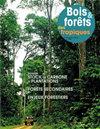炭化技术和木材种类影响喀麦隆东部工业锯木厂残留物生产的木炭的质量属性
IF 0.6
4区 农林科学
Q3 FORESTRY
引用次数: 3
摘要
喀麦隆每年收获相当数量的圆木,其中只有一小部分用于制成品。最近几十年来,特别是在东部地区,在工业木材加工单位周围出现了各种制炭倡议,以便开发剩余生物量的市场。然而,从不同物种获得的这些残留物的无差别使用通常会导致具有不同能量潜力的产品,而这些产品并不总是受到消费者的欢迎。此外,所生产的木炭的物理和化学特性是未知的,影响其质量的因素也是未知的。本研究的目的是评估喀麦隆东部地区使用不同碳化技术从工业锯木厂残留物中生产的木炭的物理和化学性质的可变性。采用Ayous、Frake和Movingui三种木材和三种窑型(传统、改良传统和Casamance系统)。对于每个物种,准备了3捆5片木材,初始含水量从28%到36%不等。测定的理化性质包括水分含量、表观密度、挥发物含量、固定碳含量、灰分含量和高热值(HHV)。我们的研究结果表明,木炭的性质取决于木材种类和所使用的窑炉类型。Movingui密度最高(0.73 g/cm3),产炭含水量最低(4.03%),表观密度最高(0.42 g/cm3)。该树种的挥发物含量最低(20.32%),灰分含量最低(1.27%),固定碳含量最高(74.95%)。所有这些数值都是用Casamance系统生产的Movingui木炭获得的。然而,同样由Casamance系统生产的Ayous木炭获得的HHV最高(32.51 MJ/kg)。在比较三种木炭系统使用,卡萨芒斯模型产生了最好的物理和化学性质的木炭。所研究的所有木炭都符合粮农组织烹饪燃料标准。从Ayous硬木中获得的木炭的最高HHV表明其在燃烧过程中释放大量热能的能力。关键词:木炭,炭化技术,喀麦隆东部,理化性质,工业锯木厂废弃物本文章由计算机程序翻译,如有差异,请以英文原文为准。
Carbonization techniques and wood species influence quality attributes of charcoals produced from industrial sawmill residues in Eastern Cameroon
Cameroon harvests a considerable volume of round wood each year, only a small part of which is used for manufactured products. In recent decades, various charcoal-making initiatives have emerged around industrial timber-processing units, particularly in the eastern region, in order to develop a market for residual biomass. However, the undifferentiated use of these residues obtained from different species often results in products with varying energy potential that are not always appreciated by consumers. Moreover, the physical and chemical characteristics of the charcoal produced are unknown, as are the factors that influence its quality. The aim of this study was to assess the variability of the physical and chemical properties of charcoal produced from industrial sawmill residues in the eastern region of Cameroon using different carbonisation techniques. Three wood species, Ayous, Frake and Movingui, and three types of kilns (traditional, improved traditional and Casamance system) were used. For each species, three bundles of five pieces of wood each were prepared, with an initial moisture content ranging from 28% to 36%. The physical and chemical properties determined were moisture content, apparent density, volatile matter content, fixed carbon content, ash content and Higher Heating Value (HHV). Our results showed that the charcoal properties varied depending on the wood species and types of kilns used. Movingui, with the highest density (0.73 g/cm3), produced charcoal with the lowest moisture content (4.03%) and the highest apparent density (0.42 g/cm3). The lowest volatile matter content (20.32%), the lowest ash content (1.27%) and the highest fixed carbon content (74.95%) were also obtained with this species. All these values were obtained with Movingui charcoal produced with the Casamance system. However, the highest HHV (32.51 MJ/kg) was obtained with charcoal from Ayous, also produced with the Casamance system. On comparing the three charcoaling systems used, the Casamance model yielded the best physical and chemical charcoal properties. All the charcoals studied complied with FAO standards for cooking fuel. The highest HHV obtained with charcoal from Ayous hardwood shows its ability to release large amounts of thermal energy during combustion.
Keywords: Charcoal, carbonization technologies, eastern Cameroon, physicochemical properties, industrial sawmills wastes.
求助全文
通过发布文献求助,成功后即可免费获取论文全文。
去求助
来源期刊

Bois et Forets Des Tropiques
FORESTRY-
CiteScore
1.50
自引率
16.70%
发文量
31
审稿时长
>12 weeks
期刊介绍:
In 1947, the former Tropical Forest Technical Centre (CTFT), now part of CIRAD, created the journal Bois et Forêts des Tropiques. Since then, it has disseminated knowledge and research results on forests in intertropical and Mediterranean regions to more than sixty countries. The articles, peer evaluated and reviewed, are short, synthetic and accessible to researchers, engineers, technicians, students and decision-makers. They present original, innovative research results, inventions or discoveries. The journal publishes in an international dimension. The topics covered are of general interest and are aimed at an informed international audience.
 求助内容:
求助内容: 应助结果提醒方式:
应助结果提醒方式:


